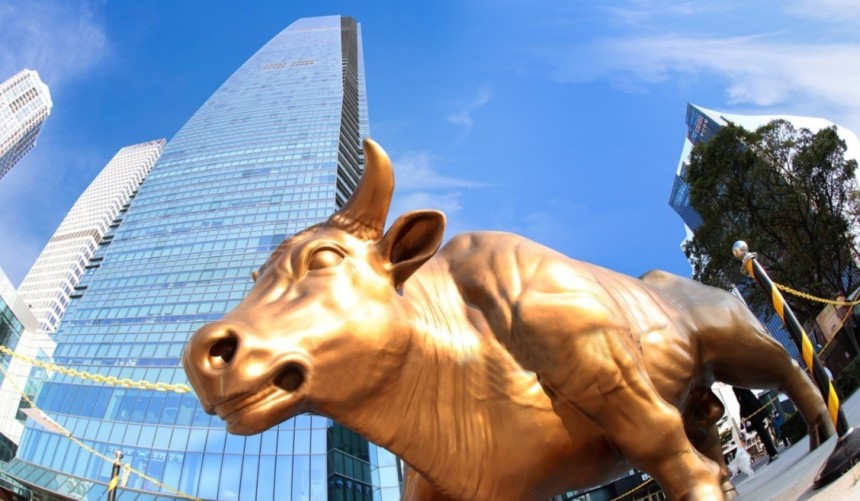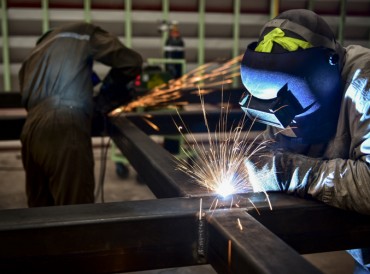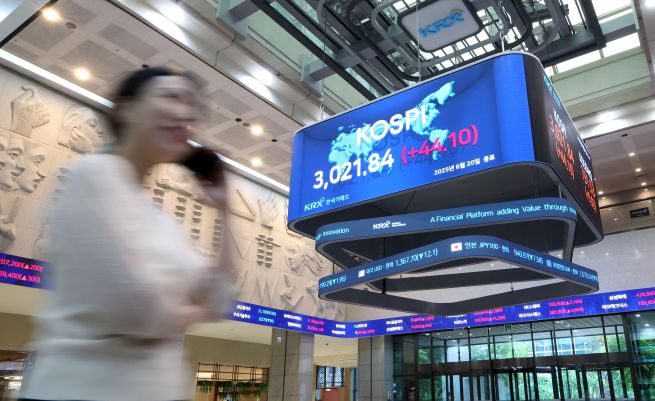
The KOSPI closed at 3,021.84 on June 20, surpassing the 3,000 mark for the first time in three and a half years, with market capitalization reaching a record high of 2,472 trillion won. (Image provided by Korea Exchange)
SEOUL, June 21 (Korea Bizwire) — South Korea’s benchmark KOSPI index surged past the 3,000 mark for the first time in three and a half years this week, fueling investor interest in sectors poised to benefit from President Lee Jae-myung’s economic agenda amid intensifying global volatility driven by renewed U.S. protectionism under President Trump.
Analysts attribute the rally to a mix of domestic policy momentum, improving investor sentiment under the new administration, and President Lee’s campaign commitment to tackling Korea’s long-standing “Korea Discount” in capital markets. President Lee recently reinforced this stance during his first external visit to the Korea Exchange since taking office.
While the global economy faces headwinds—particularly from escalating trade tensions stemming from the Trump administration’s tariff policies—analysts say investors can find shelter in domestic-oriented stocks, especially financials and consumer sectors, that stand to benefit from aggressive government stimulus and reform plans.
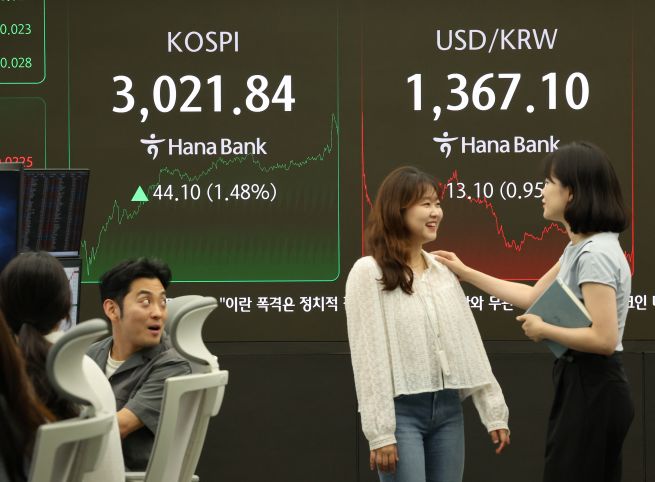
Dealers converse at the Hana Bank dealing room in Jung District, Seoul, on June 20. On the same day, the KOSPI closed at 3,021.84, up 44.10 points (1.48%) from the previous session.
Domestic Reforms Drive Optimism
The ruling Democratic Party has introduced an amendment to the Commercial Act, eliminating the one-year grace period and reinforcing the 3% shareholder voting rule for audit committee appointments, signaling its resolve to improve corporate governance.
At the same time, a large-scale second supplementary budget is in the works to boost domestic demand, further lifting market expectations.
“Domestic equities will likely remain buoyant in the second half of the year under the influence of ‘Lee-nomics,’” said Kim Jae-seung, an analyst at Hyundai Motor Securities. “As exports slow, the combination of a stronger won and fiscal stimulus could help revive the deeply depressed domestic demand sector.”
Lee Eun-taek of KB Securities ranked financials as the most preferred sector, citing structural reforms in capital markets and continued won appreciation. “Even after recent gains, financial stocks may still have room to rise,” he added, highlighting holding companies as beneficiaries of governance reforms.
Defense, Shipbuilding, and Nuclear Stand Out
Despite rising global uncertainties, Korea’s shipbuilding, defense, and nuclear energy sectors are also gaining traction, bolstered by both domestic policy and international demand.
In a sign of warming U.S.–Korea industrial ties, President Trump reportedly requested cooperation in the shipbuilding sector during his first post-inauguration call with former President Yoon Suk-yeol. Meanwhile, U.S. Navy Secretary John Phelan recently visited HD Hyundai Heavy Industries and Hanwha Ocean to discuss expanded collaboration.
“Defense and shipbuilding sectors are benefiting from a rare alignment between the new Korean administration and the Trump White House,” said Lee Kyung-min of Daishin Securities. With rising global security tensions and increased defense budgets worldwide, Korea’s military-industrial complex is expected to remain resilient.
Energy security and power demands—particularly those driven by the rapid expansion of AI infrastructure—are also fueling a revival in nuclear power investment. Following the successful bid by “Team Korea” for a Czech nuclear project, confidence in Korean nuclear technology has strengthened.
In a recent report, Macquarie Securities highlighted the importance of including nuclear, defense, and shipbuilding in investment portfolios aligned with government stimulus.
Lee Eun-taek of KB Securities added nuclear and defense to his top picks alongside financials and holding companies. “Nuclear is leading the third wave of energy transition,” he noted, “as the world pivots from globalized renewables to strategic, localized energy solutions.”
He also forecast deeper U.S. military realignments and expanded defense cost-sharing talks with allies, underscoring further upside for Korean defense firms.
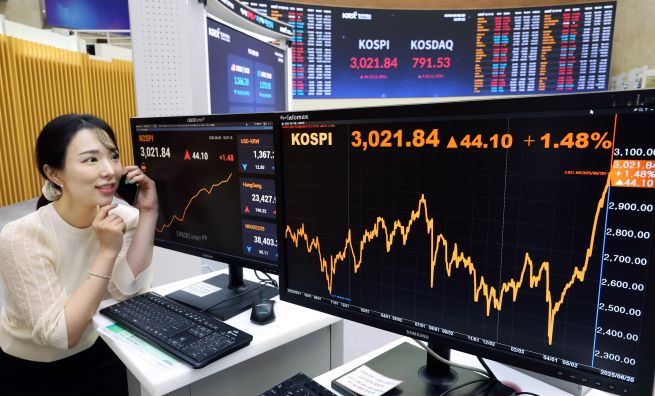
As the KOSPI continues its strong rally, recently surpassing the 3,000 mark, the total market capitalization of the Korea Exchange’s main board has increased by more than 500 trillion won so far this year. (Yonhap)
Outlook
While uncertainties surrounding U.S.–China tensions and global trade remain pronounced, the Korean stock market appears poised for continued momentum—driven by Lee’s reform-driven domestic agenda, targeted fiscal support, and favorable positioning in industries tied to global security and energy.
As one analyst summed it up: “If Korea’s policy levers align with sectoral strengths and global shifts, the market may be only at the start of a broader re-rating.”
M. H. Lee (mhlee@koreabizwire.com)


